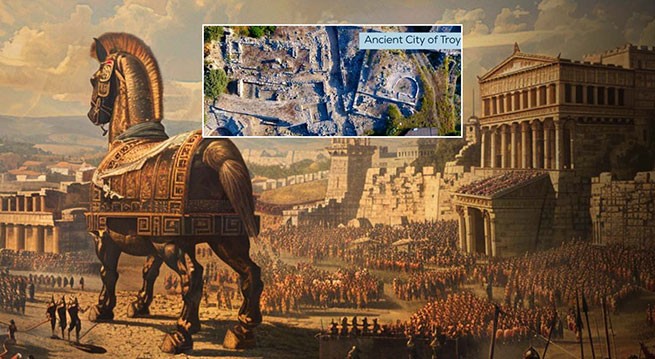Turkish archaeologists have made a fascinating discovery: they have found four human skeletons that they believe are “the last Trojans”!
Scientists named them this way because they are considered to be the last inhabitants of the ancient city after its destruction by the Greek Achaeans. In late July, large-scale excavations began in the area of the ancient city of Troy to uncover new evidence of the Trojan War. Led by Professor Rustem Aslan, the archaeological team discovered something shocking:the skeleton of a mother with a baby buried next to her is like a scene from a historical drama. Ibid. Two symmetrically located male skeletons were foundthe study of which is announced to begin in the near future.

The latest findings are being studied by Associate Professor Esin Akgül Kalkan and her team from the Department of Forensic Medicine, Faculty of Medicine, Onsekiz Mart University in Dardanelles. Scientists are analyzing the skeletons to determine the health of the deceased, the cause of death and their age, Turkiye Today reports. Kalkan notes that the state of preservation of ancient finds is crucial to the amount of information that can be gleaned from them.
Intensive excavations at Troy have been ongoing for 150 years, part of a larger research project that has earned the city a UNESCO World Heritage Site. Over the years, the work has uncovered a treasure trove of important finds from across Troy's centuries-long history.

Professor Aslan describes the historical layers of Troy: “The first settlement at Troy dates back to around 3000 BC. Later, Troy levels 1, 2 and 3 were created. In particular, the treasures discovered by Schliemann relate to Troy 2 and 3. Homeric Troy is associated with Troy 6 and 7. The sanctity of this period extends into the Hellenistic and Roman periods. In later periods, Troy was not rebuilt after strong earthquakes and continued to exist until the Byzantine period.”
A particularly interesting aspect of this particular find is the discovery of a child's skeleton, closely related to that of a woman.

This raises many questions:
- Is there a connection between these people?
- Did they die at the same time?
Trojan War – One one of the most famous conflicts in ancient Greek mythology, described in the Homeric epics “Iliad” and “Odyssey”. The war dates back to the 12th or 13th century BC, although its exact date is still controversial among historians.
According to the Homeric epics, the causes of the war go back to the divine conflict between Athena, Hera and Aphrodite, which was caused by Eris giving them a golden apple with the inscription: to the most beautiful (the most beautiful). Zeus, wanting to settle the dispute over who deserves the appledirected them to the Trojan prince Paris, who chose Aphrodite. As a reward for her prudence, Aphrodite caused Helen, the most beautiful mortal woman, to fall in love with him and follow him to Troy.
Immediately after her abduction Agamemnon, king of Mycenae and brother of Helen's husband Menelaus, led the general campaign of the Achaeans and besieged Troy for ten years to restore honor and bring Elena back, Dartmouth explains. In addition to the armed conflict between the Achaeans and the Trojans, the Ten Years' War represents conflict between gods and heroes, with the gods often interfering in human affairs.
The central figures in the conflict are Achilles, the most powerful Greek warriorwhose rage and final death occupy a central place in Homer's Iliad, as well as Hector, the son of Priam and Hecuba, leader of the Trojans and their allies, defender of Troy.







More Stories
Pope refuses to celebrate first mass at restored Notre Dame Cathedral in Paris
New illumination of the Temple of Poseidon at Cape Sounion (video)
Greek monk warns of internet speculation surrounding Athos services